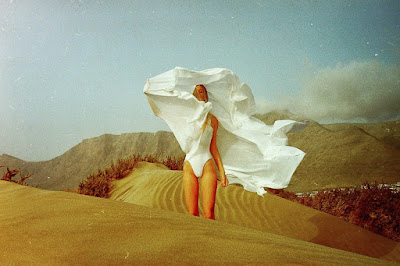In the first chapter of
Photography: History and Theory, Jae Emerling discusses the elaborate facets that account for the formation, function, and existence of photography.
All too often, the practice of photography is deemed to be overly simplistic or bland, a superficial mimicry of what already exists. However, as Emerling points out, there is an intricate and meticulous process present in this art form that allows the creator to capture and maintain a preconceived image, rather than creating a representation of that which is perceived. Thus, the photographer possesses the ability to replicate the exact impression of their artistic vision, without sacrificing or excluding any creative input.
In addition, the importance of perspective and interpretation cannot be ignored. Any singular photograph requires its viewers to make important decisions regarding the significance of every detail captured in the image and, inversely, to envision what is not captured within the frame in order to understand its relationship to the objects we can see. This reality requires the viewer to actively engage with the photograph, instead of simply admiring the rudimentary constituents that compose it.
The French poet Charles Baudelaire explicitly advocated for the acceptance of photography as art. In his critique of the French middle class's understanding of photography, Baudelaire defined the method as one of imitation, which showcased that the poet was not upset by the public's perception of photographic representation. Instead, Baudelaire criticized the peoples' interpretation of an "exact reproduction of nature" and art as one and the same (Emerling, 21). The French poet viewed art as something that was "intangible and imaginary," and that it did not need to restrict itself in the presence of reality (Emerling, 21). I believe that these sentiments communicate the magic of photography, its ability to transcend from the image that is portrayed and assume an otherworldly consciousness that encourages and demands creative engagement.
This reading mentions that photography is meant not to create, but instead to act as a "prosthetic memory" that can be utilized in several different contexts (Emerling, 21). This idea not only evokes the extensive reach of photography itself across many fields besides art, but it also discredits the notion that something artistic must and only involves rigid guidelines of creation. Photography breaks the mold by evoking emotion through the exhibition of something that is ordinary and recognizable. In doing so, this artistic medium showcases a unique interpretation of art that depends simultaneously on what is seen and unseen. By involving and relying on the viewer's familiarity to the world and its components, photography assists its audience in discovering the meaning of the things that one routinely sees but does not observe.
Emerling mentions that the discourse generated by photography has allowed individuals to question the hierarchy of society and examine philosophical ideologies concerning the way in which we view the world. How does the existence of photography as a reflection challenge us to interpret what is presented as something that is both familiar and unidentifiable? Why is it important to realize what photographies omit from the frame? (reference Emerling 20).





















